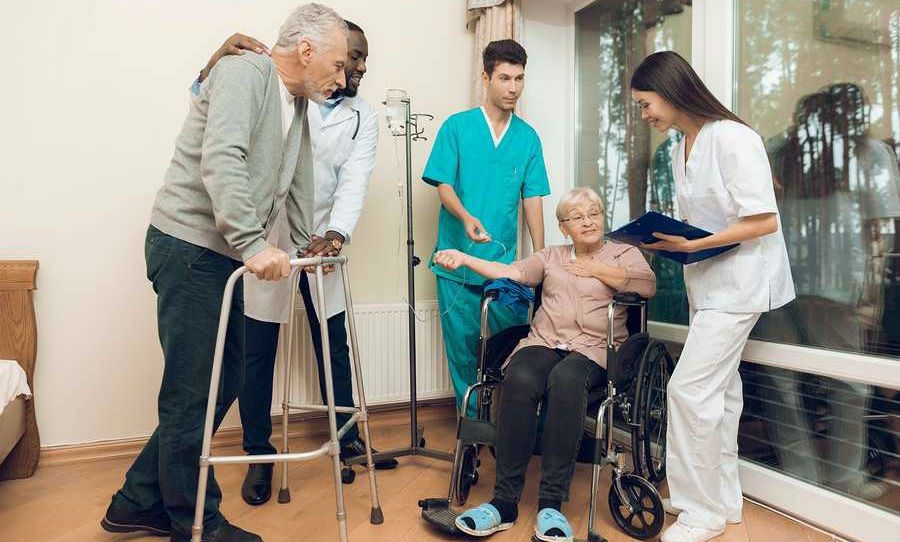Technology in Senior Care: Enhancing Lives
Technology in Senior Care: Enhancing Lives
Blog Article

Technology is rapidly transforming various aspects of our lives, and senior care is no exception. From assistive devices to telehealth platforms, technology is playing an increasingly vital role in enhancing the lives of older adults, promoting independence, improving safety, and fostering social connection. It's not about replacing human interaction but augmenting it, empowering seniors to age gracefully and maintain a high quality of life.
One of the most significant contributions of technology in senior care is its ability to promote independence. Assistive devices, such as smart canes, medication dispensers, and wearable sensors, can help seniors manage daily tasks more easily and safely. Smart home technology, including voice-activated assistants, automated lighting, and remote-controlled appliances, can further enhance independence by simplifying everyday chores and reducing the risk of falls. These technologies empower seniors to maintain their autonomy and remain in their own homes for longer.
Safety is another critical area where technology is making a significant impact. Personal Emergency Response Systems (PERS), also known as medical alert systems, provide a direct link to emergency services in case of a fall or other urgent situation. GPS tracking devices can help locate seniors who may wander due to dementia or cognitive impairment. Fall detection sensors can automatically alert caregivers or emergency services if a fall occurs. These technologies provide peace of mind for both seniors and their families, knowing that help is readily available when needed.
Technology is also playing a crucial role in combating social isolation, a common challenge faced by many seniors. Video conferencing platforms allow seniors to connect with family and friends who may live far away, fostering a sense of connection and reducing feelings of loneliness. Social media platforms can help seniors stay in touch with their communities and participate in online groups and discussions. Virtual reality experiences can even transport seniors to different locations, providing stimulating and engaging experiences for those with limited mobility. By facilitating social interaction, technology can help seniors maintain strong social connections and combat the negative effects of isolation.
Healthcare facility access is another area where technology is making a significant difference. Telehealth platforms allow seniors to consult with doctors and specialists remotely, eliminating the need for travel and making healthcare more accessible, especially for those in rural areas or with mobility limitations. Remote patient monitoring devices can track vital signs and other health data, allowing healthcare providers to monitor patients' conditions remotely and intervene proactively if necessary. These technologies are improving the quality of healthcare for seniors and making it easier for them to manage their health.
Furthermore, technology is enhancing caregiver support. Caregiver apps and online platforms provide resources, information, and support for family caregivers. These platforms can help caregivers manage schedules, track medications, and connect with other caregivers for support and advice. Wearable sensors can also provide caregivers with insights into the well-being of their loved ones, alerting them to potential problems. By providing caregivers with the tools and information they need, technology is making it easier for them to provide quality care and avoid burnout.
The future of senior care will undoubtedly see even greater integration of technology. Artificial intelligence (AI) is being used to develop personalized care plans, predict health risks, and even provide companionship. Robotics is being explored as a way to assist seniors with daily tasks and provide social interaction. As technology continues to advance, we can expect to see even more innovative solutions that enhance the lives of older adults.
However, it's important to acknowledge that access to technology and digital literacy can be barriers for some seniors. Efforts must be made to bridge the digital divide and ensure that all seniors have access to the benefits of technology. Training and support programs are essential to help seniors learn how to use new technologies effectively.
In conclusion, technology is playing a transformative role in senior care, enhancing independence, improving safety, combating social isolation, and improving access to healthcare. By embracing technology and addressing the digital divide, we can create a future where seniors can age gracefully, maintain their well-being, and continue to live fulfilling lives. It's about leveraging the power of technology to empower seniors and support them in living their best lives.